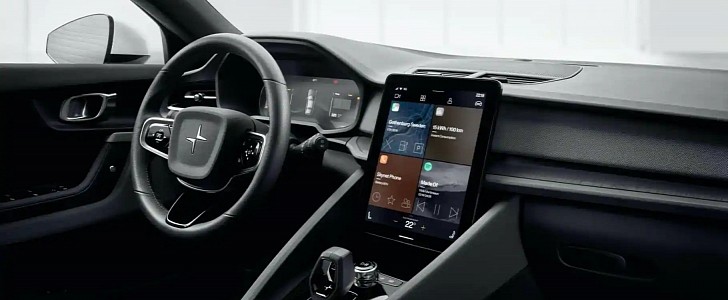Android Automotive is a platform that’s yet to gain traction, with only a couple of vehicles currently using it. Still, given the number of carmakers planning to embrace it in the next few years is rapidly growing, Google needs to be prepared to offer just the best possible experience.
Google Maps is an essential part of Android Automotive, and given the focus is on electric vehicles, the Mountain View-based search giant has equipped the app with exclusive new capabilities, including battery information and other data that makes sense in such a car.
Today, Google has announced even more updates, all supposed to deal with range anxiety in an EV.
It all comes down to how Google Maps determines the route it displays on Android Automotive, with Google explaining the app would from now on integrate recharging stations into the navigation route.
In other words, Google Maps will not just look at the map and provide you with a route to your destination, but also check for charging stations based on several characteristics of each EV. Those include the weight, the maximum battery level, the plug type, and other details.
Basically, the app no longer uses just a map of the world to determine a route that you can use, but at a map of the world that includes another map of the charging stations too. All in a way that makes sense for each EV, thus making sure the suggested route is as efficient as possible.
Google is using an advanced algorithm that analyzes an insane amount of data to calculate your route, determine how far you can go per charge, how much you need to wait for charging, and all with the final goal of generating navigation information that is tailored to each driver and car.
“To perform the above operations while addressing range anxiety with confidence, the algorithm must compute the battery consumption of each trip between stations with good precision. For this reason, Maps maintains detailed information about the road characteristics along the trip between any two stations (e.g., the length, elevation, and slope, for each segment of the trip), taking into consideration the properties of each type of EV,” Google says.
While at first glance this sounds like rocket science, you don’t have to worry about this complex approach when using Google Maps on Android Automotive. For the end user, the experience is as straightforward as it gets. The whole magic happens under the hood, and you’re just provided with an efficient route for your EV in a matter of seconds.
Today, Google has announced even more updates, all supposed to deal with range anxiety in an EV.
It all comes down to how Google Maps determines the route it displays on Android Automotive, with Google explaining the app would from now on integrate recharging stations into the navigation route.
In other words, Google Maps will not just look at the map and provide you with a route to your destination, but also check for charging stations based on several characteristics of each EV. Those include the weight, the maximum battery level, the plug type, and other details.
Basically, the app no longer uses just a map of the world to determine a route that you can use, but at a map of the world that includes another map of the charging stations too. All in a way that makes sense for each EV, thus making sure the suggested route is as efficient as possible.
Google is using an advanced algorithm that analyzes an insane amount of data to calculate your route, determine how far you can go per charge, how much you need to wait for charging, and all with the final goal of generating navigation information that is tailored to each driver and car.
“To perform the above operations while addressing range anxiety with confidence, the algorithm must compute the battery consumption of each trip between stations with good precision. For this reason, Maps maintains detailed information about the road characteristics along the trip between any two stations (e.g., the length, elevation, and slope, for each segment of the trip), taking into consideration the properties of each type of EV,” Google says.
While at first glance this sounds like rocket science, you don’t have to worry about this complex approach when using Google Maps on Android Automotive. For the end user, the experience is as straightforward as it gets. The whole magic happens under the hood, and you’re just provided with an efficient route for your EV in a matter of seconds.

